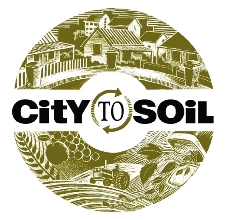
Our Carbon Footprint
Carbon offsets are positive actions taken to mitigate or balance the carbon emissions of a carbon footprint. For example, these offsets include reducing fuel consuming activities, using of non-polluting alternative energy generation, or sequestering carbon into soil just to name a few.
In most western countries today, industrial agriculture, food processing and the food distribution system are major emitters of greenhouse gases, producing about 18% of the total greenhouse gas emissions. Industrial on-farm agricultural emissions are estimated to be about half (mainly through the loss of soil organic matter) and the balance is a result of transportation, processing and distribution.
According to the distinguished Soil Association in the UK, organic agriculture has a markedly smaller carbon footprint than does industrial agriculture. This is a result of organic agriculture’s lower chemical inputs, lesser soil tillage, making soil hospitable for subsoil microbiotic activities, and the conscious focus on soil development which in effect is a carbon sequestration activity.
We at Landtasia are beginning work on modelling the carbon footprint of our agricultural enterprise, so that we can determine how to better improve our methodologies to further reduce GHG and to increase the sequestration of atmospheric carbon into our soils.
In addition, Landtasia is participating in an avant-garde recycling development that returns urban clean food waste to farms as soil building compost. The NSW Environment Trust's City-to-Soil Groundswell sustainability project is expected to prove that such clean waste can be sustainably returned to its source (i.e. farms) for beneficial natural fertilisation, while at the same time eliminating the GHG emissions associated with uncontrolled food waste decomposition in landfills.
We will keep you updated as to our progress on both initiatives at this page.
Here are some recent comments regarding the role of organic agriculture that may be of interest to you.
Peter Melchett, Soil Association Annual Conference 2007 - Friday 26 January2007
One planet agriculture - the strengths and weaknesses of organic food and farming Conclusions - climate friendly food
To save the planet we need a system of climate friendly food and farming that can feed the world a healthy diet. Organic farming and food goes a long way to delivering this.
• Climate-friendly food will come from farms avoiding [industrially derived] Nitrogen fertiliser, using natural systems and positive health to build fertility and avoid pests and diseases, with glasshouse production only using renewable energy, and no intensive, or all-indoor, livestock.
• Climate-friendly food is seasonal, whenever possible unprocessed whole food, produced and bought locally, with diets involving less but better quality meat.
• Organic farming largely delivers this up to the farm gate (although improvements are desirable and possible). After the farm gate organic delivers some of this, but there’s a lot more work to do.
David Miliband, Secretary of State for Environment, Food and Rural Affairs (UK)
There is scientific evidence that “in many, but not all cases, [organic food] produces fewer greenhouse gases”.
Craig Sams, Chairman, the Soil Association (UK)
“It’s time to start rewarding organic farmers for locking carbon back into the soil and reducing greenhouse gases – instead of subsidising chemical farming which adds to them. The right sustainable farming methods could take us half way toward the carbon reduction targets we need to save the planet.”
|


.jpg)
.jpg)